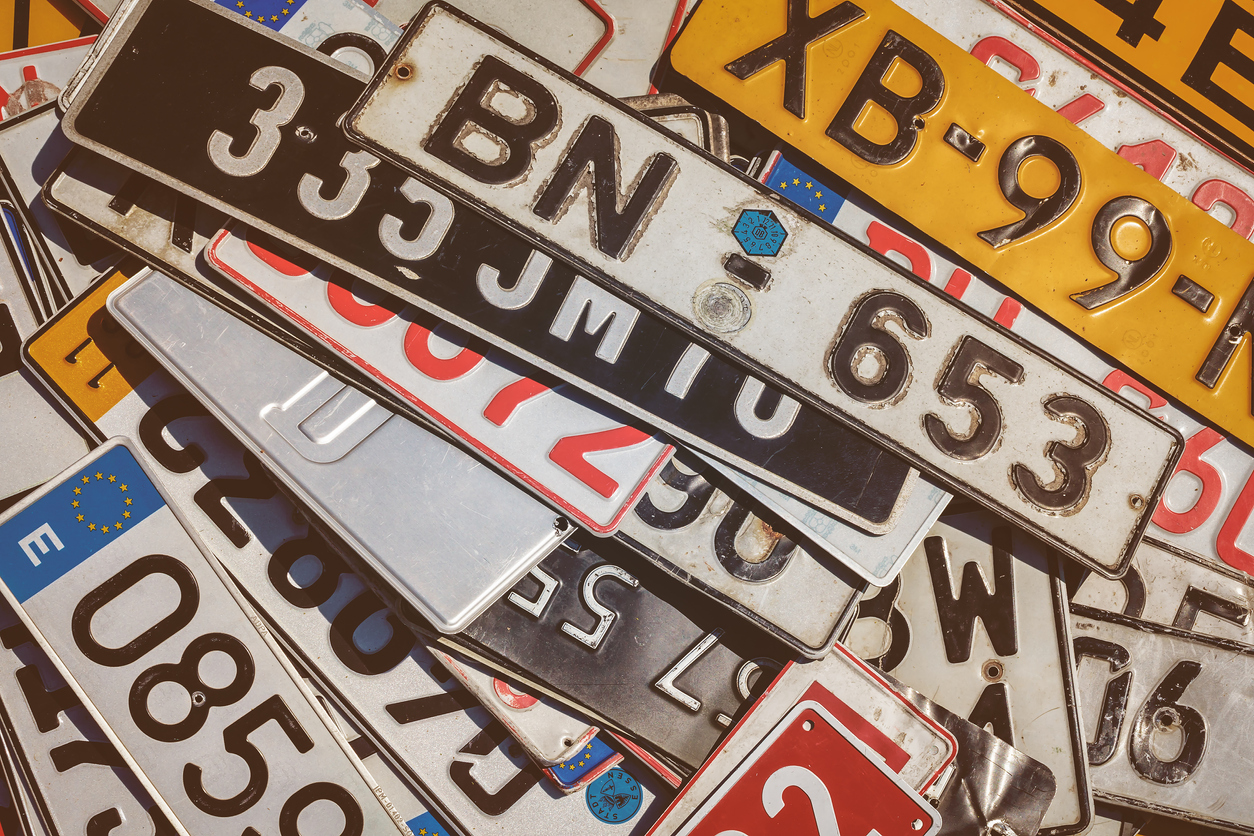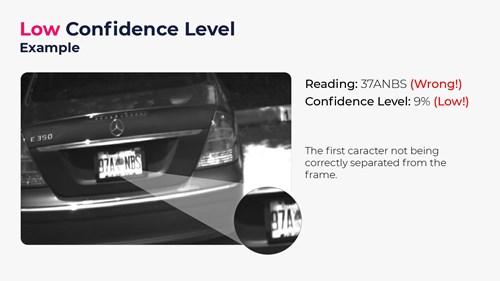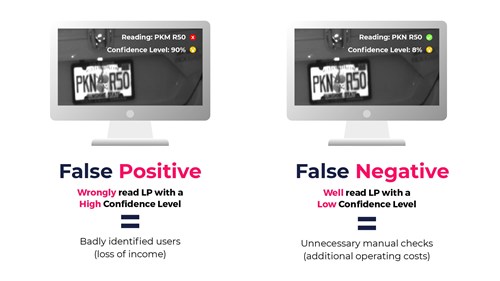Survision: LPR Confidence Level - A Closer Look
It's not just about reading license plates but -how sure we are we got it right?

Thanks to technological advances, License Plate Recognition (LPR) accuracy is nearly 100%. However, there will always be license plates (LP) that cannot be correctly recognized. Damages, unexpected shadows, interfering objects, or poor settings can result in inaccurate readings.
More powerful hardware, smarter firmware, and better settings always increase the chances of good readings, but it is not enough: in real-world operations, the cost of a mistake may be too high. For LPR to be a realistic/profitable option, operators need a way to differentiate the cases where the system is confident in its results from those in doubt.
But...
How can an LPR system determine any level of certainty without human intervention?
Meet "LPR Confidence Level"
Witty programmers of old LPR times had to design a metric that conveyed the system's level of certainty in its performance. This metric needed to be calculated automatically and linked to each reading so that operators could utilize it as a criterion for determining their course of action in any given scenario (automatic processing in case of high certainty and manual processing otherwise, for example).
For this complex algorithm, programmers had to integrate all indicators of potential reading difficulties, recorded along the LP, such as:
- Size, quality and resolution of the captured image,
- Lighting conditions,
- Plate design complexity,
- Image contrast,
- Vehicle passing speed,
- Native LPR algorithm’s accuracy level (of course).
They called it Confidence Level, which can be defined as "the level of certainty that the system has about a given license plate having been read accurately".
LPR Confidence Level is a probabilistic value that means “how sure the system is” that its reading is accurate, being 0% equivalent to “not sure” and 100% meaning “totally sure.”

Let's not confuse Confidence with Accuracy: A high Confidence Level does not guarantee that the system has correctly identified the LP; it just indicates a high probability of correct identification.
A Delicate Measure That Could Turn Things Around
LPR Confidence Level quality is particularly strategic: There is no use for an LPR system that reads the plates almost perfectly if the poorly read plates (and there always will be) cannot be identified in the mass of transactions.
Confidence Level is a method created by programmers and it can vary among manufacturers, so it is possible to talk about one method being “better or worst than others”.A poorly calculated Confidence Level will give too many false positives or negatives and mislead the operator into bad (and costly) decisions.

False positive: Wrongly read LP with a High Confidence Level, which results in badly identified users (and loss of income or customers complains and litigations).
False Negative: Well-read plates with a Low Confidence Level, which results in an excessive number of unnecessary manual checks (and additional operating costs).
Using specialized tools (such as Survision GUARD's Performance Validation Tool), it is possible to evaluate The Confidence Level quality and set appropriate thresholds for every project; this is achieved by simulating scenarios and analyzing the number of false positives and negatives at a certain level of confidence.
The Role of AI
Artificial Intelligence signifies a monumental advancement for LPR in all aspects. Trained AI models embody the ideal fusion of human analysis, vast amounts of data, cutting-edge supercomputing capabilities, and a fresh programming approach (just what LPR needed!).
Through the integration of human analysis across extensive collections of license plates, AI models consider a significantly greater number of variables with enhanced efficiency. This results in a substantial boost, not only in accuracy but also in the incorporation of these variables into more intricate and valuable calculations, such as the Confidence Level.
How Can a High-Quality Confidence Level Help You as an LPR Manager?
A high-quality Confidence Level help operators make better decisions regarding when to approve or discard a reading; correctly used, it can lead to significant operative cost reductions.
Some operators will agree to have more manual processing in exchange for having no false positives and set a rather high threshold on the Confidence Level. Others will accept a few false positives in exchange for a sharp reduction in manual processing and therefore operating costs and will set a lower threshold.
Conscious of the great potential LPR represents for the industry, SURVISION has invested heavily in providing a high-quality Confidence Level.
About SURVISION 
SURVISION is a global leader in License Plate Reading (LPR). Since 2001, with solutions being deployed in over 30 countries with more than 20,000 sensors thanks to a network of 300 Value Added Integrators. The quality of its R&D team allows SURVISION to work with world-class integrators for a complete set of innovative solutions for Smart-City, Smart-Parking, law enforcement, toll road collection, car-park management, and for local authorities.






Comments
There are no comments yet for this item
Join the discussion